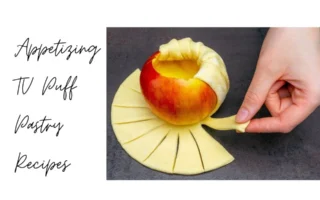It’s always disappointing to take a perfectly baked cake out of the oven, only to discover it has sunk in the middle.Understanding the science behind baking and avoiding common pitfalls can help you achieve consistently perfect cakes every time. Here’s a guide to ensuring your cakes rise evenly and stay fluffy:

Ingredients
Balancing your ingredients is crucial to the structural integrity of your cake. Too much liquid or fat can weaken the cake’s structure, leading to collapse. Use a kitchen scale for precise measurements rather than relying solely on volume measurements, which can vary in accuracy.
Step-By-Step Instructions
- Choose the Right Size Cake Tin: Always use the cake tin size specified in your recipe. Using a tin that’s too small can cause the batter to overflow and collapse. Ensure the batter height matches the recommended level for even baking.
- Mixing Matters: Properly mixing your cake batter is key. Undermixing can lead to uneven distribution of ingredients, while overmixing can incorporate too much air, weakening the cake’s structure. Adhere to the recipe’s guidelines for mixing durations and methods.
- Oven Temperature: Preheat your oven and use an oven thermometer to verify the temperature accuracy. An oven that’s too cold can slow down the baking process, resulting in a dense, sunken cake. Avoid opening the oven door frequently, especially during the early stages of baking, to prevent temperature fluctuations.
- Baking Time: Bake your cakes for the recommended time as specified in the recipe. Underbaking can cause the cake to collapse once removed from the oven.Check the cake’s doneness by inserting a toothpick or cake tester into the center. It should come out clean or with a few moist crumbs, indicating the cake is fully baked.
- Avoid Over-Aerating: While it’s important to incorporate air into the batter during the creaming process, excessive beating can create too many air bubbles. These bubbles may burst during baking, causing the cake to sink. Cream butter and sugar together at a medium speed until light and fluffy, following recipe guidelines.
- Room Temperature Ingredients: Ensure all ingredients, particularly eggs and dairy, are at room temperature before incorporating them into the batter. This helps achieve proper emulsification and even distribution of ingredients, essential for a stable cake structure.
- Cooling Process: Allow your cake to cool in the tin for 10-15 minutes before transferring it to a wire rack to cool completely. Cooling too quickly can cause the cake to collapse due to sudden temperature changes.

Directions
- Prepare Your Ingredients: Measure ingredients accurately using a kitchen scale for precision.
- Mix the Batter: Cream butter and sugar until light and fluffy. Alternate adding dry and wet ingredients, mixing until just combined.
- Preheat Your Oven: Ensure your oven is preheated to the correct temperature using an oven thermometer to verify accuracy.
- Bake Your Cake: Place the filled cake tins in the middle rack of the oven with adequate spacing between them. Avoid opening the oven door until near the end of the baking time.
- Check for Doneness: Use a toothpick or cake tester to check if the cake is fully baked. Remove from the oven and cool in the tin before transferring to a wire rack.
- Cool Completely: Allow the cake to cool completely before frosting or serving to ensure it sets properly.
Nutrition Facts
While cakes are a delightful treat, they are best enjoyed in moderation due to their higher sugar and fat content. Balancing your diet with a variety of foods is key to maintaining a healthy lifestyle.
Reviews
Home bakers who followed these tips reported improved results in their cake baking. Many found that paying attention to ingredient ratios and baking techniques significantly reduced sinking issues, resulting in consistently fluffy and delicious cakes.

Community Tips and Praise
- “Using a kitchen scale made a huge difference in my cakes!”
- “I never realized how much oven temperature could affect baking until I started using an oven thermometer.”
- “Allowing my ingredients to reach room temperature greatly improved the even rise of my cakes.”
By following these steps and understanding the science behind cake baking, you can avoid the disappointment of sinking cakes and bake with confidence every time.




